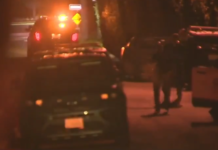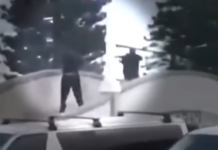In the heart of Virginia, a unique story of compassion, innovation, and wildlife conservation unfolds at the Richmond Wildlife Center. A tiny, orphaned fox kit has become the center of an extraordinary care program, where human caregivers go to remarkable lengths to mimic the maternal care of a red fox. This narrative not only highlights the dedication of wildlife rehabilitators but also sheds light on the intricate balance between human intervention and the natural world.
The Journey of an Orphaned Fox Kit
The saga began when a man, walking his dog, stumbled upon a seemingly abandoned kit in an alley. Mistaking her for a kitten, he brought her to the local Society for the Prevention of Cruelty to Animals. The kit, less than a day old, with her umbilical stump still attached, was then transferred to the Richmond Wildlife Center. Attempts to reunite her with her mother were in vain, as it was discovered that the local fox population had been trapped and relocated. This left the center with no choice but to step in as the kit’s surrogate family.
Emulating Mother Fox
The staff at the Richmond Wildlife Center have taken an innovative approach to care for the orphaned fox kit. Understanding the importance of preventing the kit from becoming habituated to humans, they don elaborate red fox masks and use rubber gloves during feeding and handling. This method is designed to mimic the presence of a mother fox as closely as possible, minimizing human interaction and sounds. The goal is to ensure that the kit can be reintroduced into the wild without a reliance on humans for survival.
In addition to the masks, the caregivers use a large stuffed animal fox to provide comfort and a sense of companionship to the kit. This surrogate mother figure is a crucial part of the kit’s enclosure, offering a semblance of normalcy and security. The staff’s dedication extends to round-the-clock care, with feedings scheduled every two to four hours, ensuring the kit receives the nutrition and attention she needs to thrive.
The Importance of Wild Reintroduction
The ultimate aim of this meticulous care regimen is to prepare the orphaned fox kit for a life in the wild. The Richmond Wildlife Center is committed to the principle that every animal in their care should have the opportunity to live freely in their natural habitat. To facilitate this, the center has begun the search for other red fox kits of similar age and weight to foster a sense of community and kinship among them. The hope is that, together, they can be released back into the wild, equipped with the necessary skills to survive and flourish.
This story is a testament to the lengths wildlife rehabilitators will go to preserve nature’s delicate balance. It underscores the importance of innovative care practices that respect the wild instincts of animals while providing them with the chance to grow and return to their natural environment.
Final Thoughts
The tale of the orphaned fox kit cared for by human hands, disguised as those of her own kind, is a poignant reminder of the impact humans can have on wildlife. It highlights the responsibility we hold to protect and preserve the natural world, even as we navigate the challenges of intervention. The Richmond Wildlife Center’s approach to wildlife rehabilitation serves as a model for conservation efforts worldwide, demonstrating that with creativity, dedication, and respect for nature, we can make a significant difference in the lives of animals. As this orphaned fox kit prepares for her journey back to the wild, she carries with her the hopes of those who have cared for her and the promise of a future where humans and wildlife coexist in harmony.




What a great story. Those who cared for this kit need to know how appreciative we are for their compassion and help.
A fox kit at birth is blind and deaf. Their senses begin to develop after 2 weeks. Wearing this mask makes no difference at this point.
Sweet story!